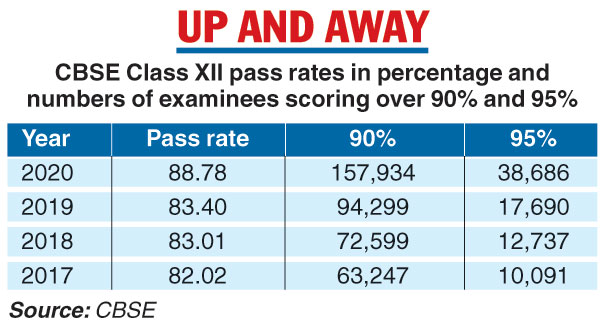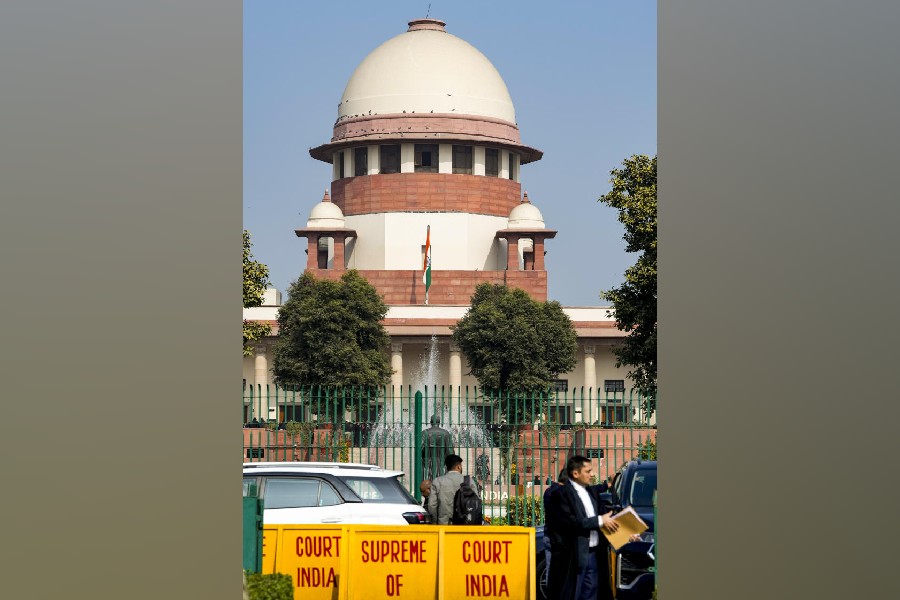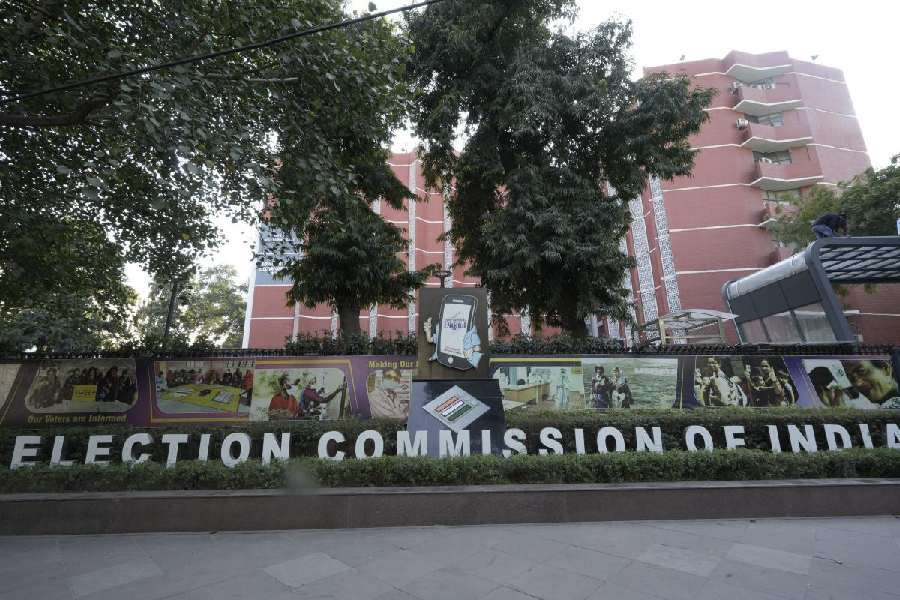A record proportion of students have passed and unprecedented numbers breached the 90 per cent and 95 per cent barriers in the Central Board of Secondary Education’s Class XII results for 2020, announced on Monday.
The pass rate of 88.78 per cent, which school principals said was the highest ever, reflects a jump of more than 5 percentage points from last year. The numbers of examinees topping 90 and 95 per cent have bettered the 2019 figures by more than 67 per cent and 118 per cent, respectively.

While improved results tend to raise the admission cut-offs for undergraduate courses, academics said the cut-offs may remain the same as last year in top institutions like Delhi University that usually attract students from across the country. This is so because students may this year prefer to enrol in institutions nearer home because of the Covid-19 threat, they said.
While the CBSE has not commented, principals are attributing the sharp rise in success rates to the board’s formula of best-subject averages and internal assessment to award marks in papers in which exams could not be conducted.
This has led some parents to allege “injustice” to those students who were able to sit all their papers before the Covid-19 outbreak stopped the exams.
A desire to avoid controversy may therefore be one reason the CBSE did not name the toppers, breaking with the practice of the past few years. The board did not explain the omission.
A student is supposed to sit exams for five papers, although some opt to take a sixth elective paper. This year, the board could not hold exams in about a dozen papers because of the epidemic, and in an additional 11 papers for students from northeast Delhi because of the late-February riots.
While the results of the students who had sat all their exams reflected the actual marks they had obtained, the board had to work out a formula for evaluating the rest.
Students who had appeared in more than three papers were awarded the average of their best three scores in the remaining papers. Those who appeared in three subjects were awarded the average of their best two scores in the rest.
Students from northeast Delhi who were able to sit just one or two exams were evaluated on basis of their marks in these papers as well as their internal assessment scores, awarded by their schools.
“The main reason for the increase in the pass rate and (in the number of) those scoring high percentages is the assessment formula worked out by the CBSE. The students got some advantage,” said Sangita Bhatia, principal of the KIIT World School here.
A parent, who did not wish to be identified, said: “What has changed within one year to justify such an increase in the pass rate? This suggests the assessment formula was too liberal for those who could not appear in some of the papers. This also means an injustice to the students who had sat all their exams.”
The pass rate has tended to increase marginally through the past decade except for a minor dip in 2017. Bhatia said this reflected the increased support that students nowadays receive from their parents, teachers and schools.
DU cut-offs
While the admission cut-offs at Delhi University, which attracts large numbers of outstation students, are usually among the highest in the country, a DU teacher involved in admissions said the cut-offs may not be raised this year.
“This year’s cut-offs may remain more or less the same as last year because the catchment area for DU will be confined to the National Capital Region (owing to the epidemic). Besides, DU is increasing its seats,” the teacher said.
While 2.8 lakh students had applied for DU undergraduate courses last year, the number is less than 2.4 lakh this year with five more days left to apply. Not too many are expected to apply at this stage.
DU’s 66 colleges are set to offer nearly 70,000 seats in the regular mode -- up from 61,000 last year --- apart from unlimited enrolment in the distance mode.
The most sought after courses at DU include economics, commerce and English honours. The cut-off for these programmes at DU’s leading colleges tend to range between 94 and 98 per cent.
A total of 11.93 lakh students from 13,109 schools had taken the Class XII CBSE exams, of whom 10.59 lakh have passed.
The pass rate among girls is 92 per cent against 86 per cent among boys. Region-wise, Trivandrum recorded the highest pass rate of 97.67 per cent, followed by Bangalore at 97.05.
The Bhubaneswar region, which covers Odisha, Bengal and Chhattisgarh, recorded a 91.46 per cent pass rate while the Patna region witnessed the lowest at 74.57 per cent.
The central government-run Jawahar Navodaya Vidyalayas recorded a 98.7 per cent pass rate, outdoing the Kendriya Vidyalayas (98.6 per cent). Private schools recorded a pass rate of 88.2 per cent.










